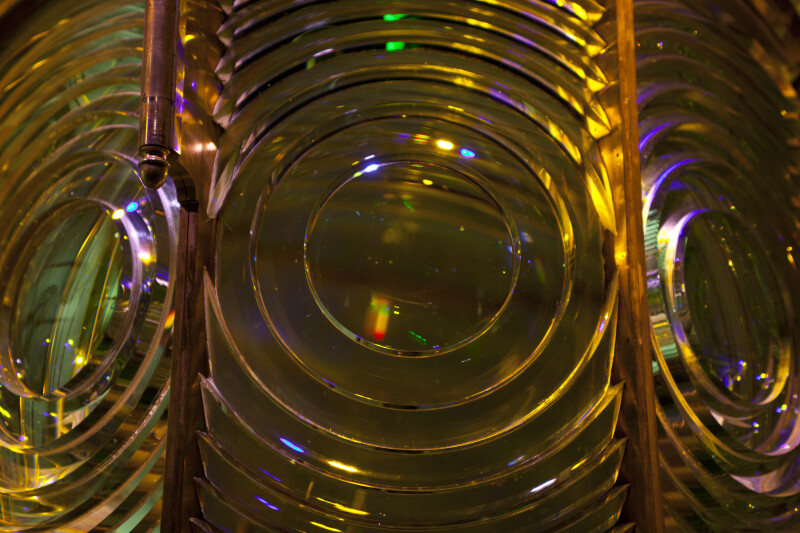Fresnel Lens
by Roy Winkelman

This beautiful glass object from the National Museum of American History in Washington, DC, is an example of an important optical invention that saved countless lives in the nineteenth and twentieth centuries. From its first use in a lighthouse in 1823 until it was replaced by more modern technology over a century later, Fresnel lenses enabled lighthouses to more effectively aim their beams across dangerous waters.
 Invented by Augustin-Jean Fresnel, Fresnel lens works by “collapsing” the thicker parts of a lens as shown in the diagram to the left. Notice that the curved parts of the glass that do the work of focusing the light are carefully preserved in the “flattened” Fresnel version. Glass is heavy. By greatly reducing the thickness of the lens, larger more powerful lights could be installed in lighthouses. Lighthouse lenses were constructed as tall as 12 feet (3.7 m) using the thinner Fresnel lenses.
Invented by Augustin-Jean Fresnel, Fresnel lens works by “collapsing” the thicker parts of a lens as shown in the diagram to the left. Notice that the curved parts of the glass that do the work of focusing the light are carefully preserved in the “flattened” Fresnel version. Glass is heavy. By greatly reducing the thickness of the lens, larger more powerful lights could be installed in lighthouses. Lighthouse lenses were constructed as tall as 12 feet (3.7 m) using the thinner Fresnel lenses.
Nowadays, extremely thin Fresnel lenses can be manufactured using clear plastic. The magnifying sheets you may find in a dollar store are actually very, very flat Fresnel lenses. If you look closely, you can see the concentric circles stamped into the plastic.
Now that you understand how a Fresnel lens works, explore the gallery of lens drawings below. Many of the illustrations are taken from patent applications. They were among the most important inventions in the 1800s.
Lenses and Refraction
These are just a few of the dozens of lens illustrations on the ClipArt ETC website. The illustrations show the refraction of light through glass, the many types of lenses, and of course, numerous examples of Fresnel lenses.

